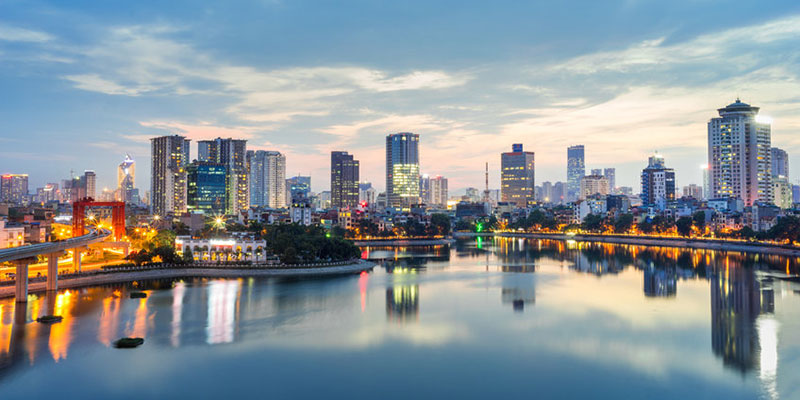Vietnam’s recent changes to its PPP laws have been attracting international investment in updating the country’s wastewater treatment infrastructure.
New features like investment incentives have spurred significant wastewater treatment buildout
In 2021, Vietnam adopted a new public-private partnership (PPP) law in response to growing calls for infrastructure investment in Vietnam. The move is already attracting significant investment in the Southeast Asian nation of nearly 100 million people.
The new law superseded previous regulations and reshaped Vietnam’s PPP legal framework for more standardization with international practices, creating detailed investment incentives, a currency balancing program, and revenue risk-sharing features. It already has spurred a significant wastewater treatment plant buildout in a nation that has experienced its share of wastewater problems.
$300 Million in PPP Investment
Among the first to take advantage of the new framework are wastewater treatment projects at Tuyen Quang, Nam Dinh, Kon Tum, and Phuc Yen, in addition to an ambitious $127 million, 130,000 m3/d plant in Long Khanh. All told, the projects represent almost $300 million in investment.
A recent tightening of environmental protection laws, elevated consumer demand, and scarcity of investment capital for infrastructure projects that typically take a decade to turn a profit – all helped push the PPP deals forward. PPP arrangements often require no upfront investment, making them a good fit when capital resources are low.
PPP structures, such as BOO and BOOT financing available through Fluence’s Water Management Services, have become very popular in areas with limited resources because they allow the customer to pay for the treatment as a service, with no upfront investment. Fluence puts forward the capital to build, manage, and maintain the plant, freeing customers from the burden of maintaining a specialized workforce and a local parts inventory. International law firm White & Case weighed in:
PPPs offer an ideal framework for utilising private sector finance whilst also deriving the benefit of domestic and foreign expertise, know-how and innovation, both technically and technologically, and will no doubt be utilised more frequently by the Vietnamese Government going forward so as to free up an already stretched state budget and allow the roll out of many more projects.
Although the build-transfer (BT) model is no longer permitted under the new law, seven types of PPP are permitted:
- Build-operate-transfer (BOT)
- Build-transfer-operate (BTO)
- Build-own-operate (BOO)
- Operations and maintenance (O&M)
- Build-transfer-lease (BTL)
- Build-lease-transfer (BLT)
- Mixed contracts combining (a) BOT, BTO, BOO, or O&M and (b) BTL or BLT
Foreign Infrastructure Investment
Foreign investment is expected to play a growing role in Vietnam over the next decade, notably in infrastructure and construction, with companies identifying opportunities in technically challenging projects that match their specializations, or in selling high-ticket industrial goods.
Vietnam’s infrastructure market is marked by an open competitiveness evidenced by the diversity of foreign companies operating there. South Korea holds 17% of market, Japan comes in at 14%, and China follows with about 10%. Foreign companies make up 57% of the market share, a lower proportion of local dominance than in other Southeast Asian countries.
Some caution that the new law isn’t perfect. For instance, because of some overlapping regulations, state disbursements can be problematic. Dispute settlement also may be difficult for foreign investors because the process is generally referred to Vietnamese courts rather than to international arbitration. And administrative red tape has to be addressed upfront by investors. Nevertheless, the new law is already proving itself by sparking great infrastructure progress in the region.
Fluence is an international water company with operations in Asia and the Pacific, including Aspiral™ modular wastewater treatment unit manufacturing operations in Jiangsu, China, and a major wastewater treatment project at the Port of Sihanoukville, Cambodia. Contact Fluence – our experts are here to discuss your water and wastewater infrastructure needs in Southeast Asia or anywhere in the world.

